Resources
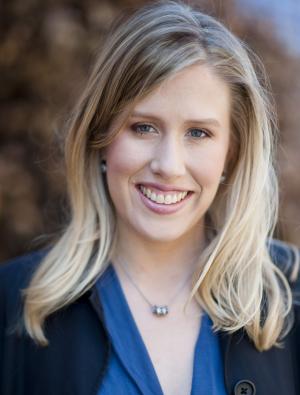
At Nashotah House Theological Seminary, a crucial element of our participation in the seminary’s Anglo-Catholic tradition is the student body and faculty’s regular presence at morning prayer, mass, and sung even-song. In the seminary’s beautiful chapel, surrounded by stained glass and hand-carved wooden statues, we sit in the antique wooden choir stalls lining the chancel and join together in worship. As a junior faculty member, I quickly learned a Nashotah House tradition: your choir stall is not yours to determine. The seats are assigned based on seniority, and priority is zealously guarded. Where you sit matters. This tradition of established place carries its own ethical challenges and requires its own ethical interrogation. What assumptions regarding hierarchy and privilege in our tradition and amongst our student body and faculty does it underwrite? To provide one example, our tradition has come into conflict with our commitment to ensuring that students with mobility challenges have equal opportunity to participate in worship, requiring questioning and ultimately changes to our tradition. Teaching social justice in a tradition requires inviting students to engage in a similar (although broader) excavation of that tradition. Of course, a crucial part of this teaching involves learning alongside my students how to step outside the tradition to critically confront the moral and ethical failure of Anglicans, such as the use of Anglican theology at times to support slavery and colonialism. This critical engagement requires accepting that our seats often are gained at the expense of others, and may require change and even surrender on our parts. These moral failures have been well documented and extensively explored, so excavating the resources for critique has been fairly straightforward. An unexpected joy of this type of excavation, however, has been how many good and constructive resources for social justice remain to be uncovered in the tradition. The Oxford Movement which launched Anglo-Catholicism accompanied liturgical revision with a serious theologically-grounded commitment to working for social justice, spanning generations of the movement and manifested in many different forms. Excavating these resources provides the opportunity to invite students into a different form of engagement with the tradition. Students have become imaginatively engaged in questioning their own social assumptions and career aspirations by reading about the so-called “slum priests,” for example, whose commitment to “ritualism” was equaled by their commitment to working to challenge the economic, social, and political structures which created and justified the appalling living conditions suffered by the poor of British manufacturing cities. Students have learned how to connect social critique and advocacy for justice to Anglican theology through reading the works of the great reforming Archbishop of Canterbury, William Temple. Of course, exposure to works of Anglicans such as Pauli Murray and Bishop Desmond Tutu have expanded their conceptions of Anglicanism’s work for social justice beyond Anglo-Catholicism and the British Isles. One of the most fruitful resources I have found for retrieval within the tradition are the editions of the British Critic—the journal edited by John Henry Newman in the early days of the Tractarian controversies. Along with discussion of history, doctrine, and liturgy, the pages of this Christian socialist leaning journal are filled with essays of social critique and challenge. One of the essays, written in 1842, which has engaged and challenged my students the most is a long theological critique of the practice then common in British parishes of renting pews to the social elite. The author describes how the poor, walking in and seeing the great boxed pews lined along the front of the parish church, are confronted with an image of the priority of wealth and privilege which runs exactly opposite to Jesus’s message of the priority of the poor in the gospel. Rather than encountering “the image and pattern of heaven” in the church, they see “the world, the flesh, and the devil apparently in full possession.” As part of the Anglo-Catholic liturgical revival, the author calls for the removal of these pews and the restoration of the parish to the poor and needy whom Christ intends to possess it. Through this image, students begin to encounter the connection between the Anglo-Catholic tradition of beautiful worship and architecture with the beauty of justice and service. Over my time at Nashotah, I have realized that our tradition of choir stall seating incorporates not only seniority, but also service. At every service, one of the sacristans (the student-leaders with the most authority in worship) always forgoes sitting in choir to sit by the back door of the chapel—he or she is placed there by the tradition to greet, care for, and assist any guests who might join in the service. My hope for my students is that they leave our seminary having learned that Anglo Catholicism not only provides choir stalls, but also provides models and methods to emulate, just like the sacristans sitting at the back of the church ready to serve and care for others. Where you sit matters.
What is trauma and how does trauma affect body, mind, and spirit? Are there different kinds of trauma? Since classrooms are spaces of human interactions, understanding how fear and woundedness affects the teacher and the learner is critical to effective teaching. What classroom practices might lessen the experience of fear, helplessness, voicelessness, and being overwhelmed?
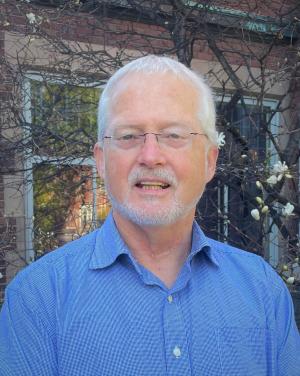
“The essence of metaphor is understanding and experiencing something unfamiliar or an abstraction in terms of something familiar and concrete. Thus, our language is an incredibly intricate web of definitions of one thing in terms of another.”[1] Mary Ylvisaker Nilsen’s expansive definition of metaphor applies to teaching—helping students understand unfamiliar subjects, defining one thing in terms of another, communicating abstract information. Good teaching, then, involves the use of good metaphors. So, let us apply an over-arching, controlling metaphor to the life of Martin Luther. It’s a metaphor intended to interpret the sixteenth-century German reformer for college and seminary students—learners who are aware of the Olympics and YouTube and need to know more about history and the history of theology. The metaphor comes with readily accessible videos, so the teacher can provide students, whether they snowboard or not, a visually impressive image with which to define “one thing in terms of another.” The hope here is to describe the Reformer’s life in terms of risk (edges are inherently dangerous) and unintended consequences (he did not intend to split the church). An edge can also be a threshold and an entry to something new (like the modern era). The presentation of Martin’s life, then, rises and falls, twisting and turning, carried forward by forces he did not create or foresee. There’s another connection here, for a creative teacher: our present time of pandemic, insurrection, and big lies. We confront dangers all around. Unforeseen outcomes startle us. Something new seems to be emerging in our world. If so, Martin Luther can help us. His remarkable life exemplifies wisdom and confusion, courage and cowardice, faith and doubt. A critical engagement with the life of Martin Luther is not simply a journey into the past of long ago and far away. Martin’s successes and failures have much to teach us now. “Martin Luther, Shaun White, and a Life on the Edge” Martin Luther and Olympic snowboarding—not often paired together. Or not often paired together enough. When an elite athlete drops into the half-pipe, there’s crazy risk everywhere, with no turning back. Picture Shaun White at the PyeongChang games in 2018.[2] He had to come down that mountain, one way or another. White’s incredible run ended in epic triumph, but it easily could’ve ended in the hospital or the morgue. No matter what, he had to come down. The whole business is fraught with peril. It takes no small amount of courage to seize such a moment, accept the risks, push through to the end. Edgy, on so many levels. Kind of like Luther’s life, when he came careening down the half-pipe of history. To survive, he pulled off some amazing stunts; improvising at break-neck speeds, keeping his balance (barely), figuring it out as he went. Crazy risk everywhere. He didn’t intend to shred the Reformation mountain, but once Luther dropped in, he could not not finish the run. A life on the edge if there ever was one. However, there’s a huge difference between Mr. White and Mr. Luther. Shaun intentionally did what he did that day. He practiced and trained—even invented a move for the occasion. Martin, however, had little or no idea what he was getting into. He spent much of his life doing what good Saxon boys from good Saxon families did in those days. A smart kid, he went to the schools chosen for him by his Dad. He went to college a couple of towns over, at the University of Erfurt. He studied law; a degree that would make his Papa proud. An obedient son if there ever was one. And Luther was also a dutiful son of the church—the only church in town, the Church of Rome. Eventually, Martin followed the lead of his Mother; his Mother Church, that is. He became an Augustinian Brother. And a priest. He sought comfort in the bosom of the Church—praying, studying, preaching, and teaching. All of that because he’d taken a vow to obey his superiors. The responsible Augustinian brother and junior professor dutifully put one foot in front of the other. He didn’t know he was getting close to any edge. He didn’t even know there was an edge. And then he walked off it. [1] Mary Ylvisaker Nilsen, Words that Sing (Des Moines, IA: Zion Publishing, 2012), Kindle Edition, location 2265ff. [2] https://www.youtube.com/watch?v=he03dVkhLTM Photo by Philipp Kämmerer on Unsplash
What does it mean when scholars of religion are forbidden from teaching about racism? Who is harmed and what problems are created when sophisticated and common-sense approaches to race are part of the curricular experience? In what new ways is tenure necessary for scholars who risk teaching critical race theory? Dr. Finley’s work on whiteness is sparking controversy in and beyond his Louisiana State University classroom. As a scholar of religion, what preparation is needed for the moments our work spills-over into the larger society and provokes social discourse with the potential to catalyze social change? Scholar, who told you that you could think freely, think boldly, and think imaginatively? What is it to garner the courage to do the scholarly work our souls must have?
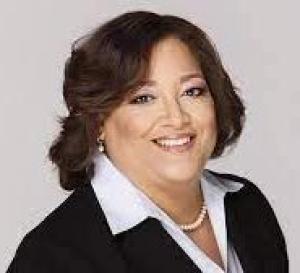
Democracy is the principle of governance marked by every person’s fair and equal treatment. In democratic societies, everyone has the same unfettered access to public goods and shares fairly in public life. Trust undergirds and upholds systems of democracy and these systems disintegrate when the people no longer trust. Importantly, this dependent relationship between democracy and trust exists in the public square and in the seminary classroom. Before I reflect upon democracy and trust in the classroom, I must share a bit about myself. I come to the work of religious and theological education from a career in corporate marketing. My understanding of the teaching and learning experience stems from my years in consumer brand management, during which I developed “muscle memory” in identifying a need, determining how my product uniquely meets that need, and presenting my product in ways that encourage a particular action (usually a purchase). During my time at corporations like the Ford Motor Company, Nabisco, the Fort Howard Paper Company, and The Coca-Cola Company, I was rewarded for my ability to assess my product’s performance knowing market conditions change. As it was with automobiles, cookies, facial tissue, and carbonated beverages, so it is with religious education. As a seminary professor with an eye towards democracy in the classroom, I recognize that classroom environments have shifted in ways that make trust an even more critical part of my pedagogical offerings. Trust must undergird democracy in my classrooms. In what follows, I share my thoughts on some of the actions I take to help build democracy through trust in my classrooms. Trust in the Virtual Classroom This year my fall semester students operated with a heightened sense of anxiety; more of them fixated on the smallest details of the syllabus and their performance. At first, I thought this was a life-stage function as we had many students who matriculated directly from their undergraduate experience. Upon further reflection, I determined that life stage was not the primary driver of this anxious student behavior. This group of students began their seminary journey with no in-person learning; they were 100% online. The lack of in-person interactions brought on by COVID-19 safety protocols (let alone being unable to see or encounter professors or each other outside of the classroom) contributed to students’ anxiety and distrust. I am a Biblical studies professor, currently teaching introductory courses and specialized electives. Students in my introductory class—which is required for the MDiv degree—began online instead of in person. Many of these students applied and were accepted to seminary before the COVID-19 pandemic and had no intention of attending seminary online. My fall 2020 students were all new to the seminary, and I was one of their first seminary professors. Most were new to online learning and they were different when it came to trust in my course. Their levels of trust were lower, and their levels of anxiety were higher than my former students’, who met in-person in traditional formats. Over the Christmas break, I was intentional about modifying my syllabus and reassessing some of my pedagogical practices to account for issues of student trust and anxiety. Consistency is critical when creating trust, allaying anxiety, and nurturing democracy in the classroom. Small details are essential in matters of classroom trust; therefore, I was careful to make sure the templates I used for lecture-discussion looked alike. While it is easier to repurpose material from other presentations, I converted presentation slides, so they matched visually. The title slide from my early “Ancient Near Eastern Context of the Hebrew Bible” presentation looks exactly like the title slide for my latter “Wisdom Literature” presentation. Something is comforting about seeing patterns. I imagined my students thinking, “I recognize this. Dr. Russaw has projected a slide that resonates with last week’s information presentation. This experience is not something new I have to manage in my day. I can relax and learn.” Secondly, I structured class sessions in the same way each week. Each session began with a centering moment and ended with “good words” of encouragement. My teaching assistant took responsibility for each week’s centering moment, and arranging for volunteers for the closing words. These consistent rituals did a couple of things. Students knew the centering moment signaled the official start of class. It was not uncommon to hear deep sighs at the end of the centering moment. It was as if students were saying, “Okay. I am in a (virtual) space where I feel comfortable. I can relax a bit and lean into the next couple of hours of learning.” Giving students a way to participate through volunteering to offer closing words helped build democracy because all students had an equal opportunity to participate, or not. We all, professors and students, live in a time of great uncertainty, and that uncertainty makes for anxiousness and distrust in the classroom. I hope that by attending to small actions we can take in our classrooms, our students will learn to trust and will be able to flourish in their learning.
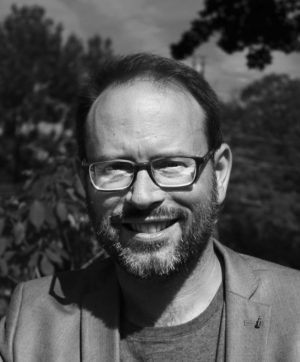
[audio mp3="https://www.wabashcenter.wabash.edu/wp-content/uploads/2021/04/Perichoresis.mp3"][/audio] John of Damascus, one of the most important theologians of Eastern Orthodox Christianity, writes the following about the relationship between the three Persons of the Trinity: [They] dwell and are established firmly in one another. For they are inseparable and cannot part from one another, but keep to their separate courses within one another, without coalescing or mingling, but cleaving to each other. For the Son is in the Father and the Spirit: and the Spirit in the Father and the Son: and the Father in the Son and the Spirit, but there is no coalescence or commingling or confusion. And there is one and the same motion: for there is one impulse and one motion of the three subsistences, which is not to be observed in any created nature. The Greek word “perichoresis” has come to refer not only to this multi-dimensional, incomprehensible unity, but to a particular metaphor describing this relationship: that of a “divine dance” between/among/within the Trinity. My composition Perichoresis[1] is my musical impression of this “divine dance.” Its overall mood is joyous, an ecstatic whirling-about in which all three members become lost in the ecstasy of divine fellowship. At the exact moment of the dance when one member moves, the other fills in the spot left vacant. Seen from afar, the effect might be like looking at a spinning wheel whose spokes disappear from view, yet which retains its speed, energy, and power. Musically, this occurs through the technique of giving each of the five instruments their own, equally important roles to play. In the fast sections there is no clear melody that dominates the texture, relegating the other parts to mere accompaniment. Instead, each musical “voice” contributes its own unique and independent strand, each often winding around the others in a musical version of indwelling. The complementary rhythms and melodies often make it difficult to distinguish these layers, yet the absence of any one of them would leave an obvious hole in the musical fabric. Musical textures create a sonic example of an ideal community: one body, many parts, and none more important or unique than the other. Unlike visual art-forms, music brings to life these types of complex relationships in ways that make sense to us humans. Music allows us to hear individual parts at the same time as we hear the whole that they create. The bassline of a Beyoncé track is 100% funky without anything else. Yet, when part of a family of horn riffs, drum loops, background singers, and lead vocals, that constituent element takes on a new identity. It is the same as it was, yet completely different: a new thing, yet not new at all. Its beginning is its ending, its Alpha already its Omega. The Trinity expands upon this idea by challenging us to imagine a mutual interpenetration of the parts and the whole. As a teacher, a composer, and member of the Body of Christ, this is the model of community for which I strive. In the classroom or the rehearsal studio my goal is to create an environment in which my students and I take turns leading the “dance.” But this only happens when I get out of the way, when I recognize that my students are not small-scale versions of myself, but rather young people whose lived experiences are fertile sources of knowledge. In the classroom, this happens when I allow a discussion to take on a life of its own, skipping down paths I didn’t even know were on the map. In orchestra rehearsals it happens when a French horn player’s phrasing opens up a new dimension of musical interpretation, changing the way I conduct an entire passage. In both situations, the requirement is that I stop trying to hear the content of my student’s ideas, and instead listen to the ways those ideas express their full humanity—when I listen through or beyond their words to understand who they are. When this happens, the space I vacate does not remain empty, but is immediately filled with a presence: a person whose life is both similar to mine and different, and with whom I can now collaborate as co-learner and co-teacher. As in the classroom and the rehearsal hall, however, there are many moments in Perichoresis when certain parts come to the fore and others step back. In the slow middle section, a lyrical melody ebbs and flows, sometimes played by one instrument and sometimes joined by a partner. But even in these moments we don’t lose sight of our ideal vision of community. The melodies only sing because the ground beneath them allows them to stand. Conversely, the accompanying chords draw their notes from the melody, taking a line and turning it into an object: something solid and substantial. When I’m lecturing or leading discussion, I try to remember that I don’t need to be the melody. While my voice may be the most prominent at those moments, thinking of myself as the accompaniment is a way for me to recontextualize my role. My words can be the fertile soil for my students’ nascent ideas, the ground on which they can learn how to stand. I don’t always get there. As a teacher, husband, father, or church member, I often find myself singing the melody before I’m even aware of it! As I learn how to undo years of uncritical acceptance of my importance as a white guy, it’s helpful for me to look to music as a model: it is, after all, the most evanescent of all artforms, a will-o’-the-wisp that disappears as quickly as we hear it. Its fundamental weakness, however, belies an extraordinary power: power that can change hearts and minds—but only if we allow it in, if we really listen to it. My hope is that listening to my composition will help you think in new ways about the Trinity. Perhaps it will help you imagine how three Persons can be One, or One Person can be Three. And perhaps, the next time you listen to music, you might even be inspired to take it as a model for your life as a teacher, leader, or community member: a model based on relationships, mutual indwelling, and the joy of the dance. [1] Composed by Delvyn Case, and premiered by Boston’s Triton Brass Quintet, Perichoresis has also been performed by the Grammy-winning Chestnut Brass Company. Of this piece, theologian Walter Brueggemann wrote, “I am not a great theologian but have pondered ‘perichoresis’ for a long time. This is the finest exposition of that thick idea that I have encountered.” The audio is available here: https://www.youtube.com/watch?v=4GoHExKMJLk. IMAGE: Photo by Sheng Dai (Chicago) on Unsplash
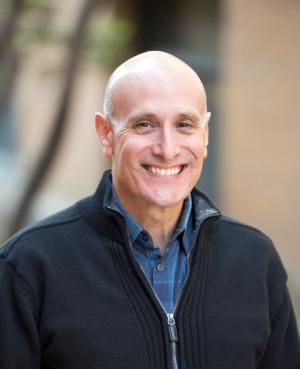
I teach a course on the ethics of world religions which takes a narrative approach. Rather than just focusing on the text and tenets of religions in relationship to ethics, the course also highlights the life stories of “exemplars” from various religious perspectives. These have included civil rights activist Malcolm X, Buddhist monk Thich Nhat Hanh, and Liberian Nobel Prize winner Leymah Gbowee. The advantage of using this approach is that it gives flesh to sometimes abstract principles, demonstrating that all ethics are situational and depend on one’s positionality. These are complete human beings, so they show both human potentiality and human frailty. One particularly thorny exemplar we focus on in the course is Mohandas Gandhi. Students study his life, from his early years to his education in Britain, work in South Africa, and finally his years of leading the movement for Indian independence. They also read selections from his writing, delving into his views on ahimsa or non-killing, satyagraha or “truth force,” the caste system, and his tactics of nonviolent noncooperation. Gandhi’s negative views of Black South Africans when he lived there are an issue in his history that cannot be ignored. Invariably the question arises, was Gandhi a racist? Throughout the course, I emphasize the value of dialogue over debate when discussing religious perspectives; I wanted to create a forum where students could engage this question in a way that developed their ability to give careful attention to others’ perspectives—a space where dialogue around these differences could lead to greater understanding. The process I use to accomplish this learning strategy begins with dividing the students into pairs and providing them with two short newspaper articles on the subject. While these are not opinion pieces, each article has a particular bias—one towards naming Gandhi as a racist and the other towards seeing him as evolving on issues of race over his lifetime. Each student in the pair is asked to read one of these articles, and to identify the “slant” of the author and the particular points that support the author’s perspective. Each student in the pair then presents this view to their partner as if the view was their own. In other words, one student presents the view that Gandhi had racist views and should be held accountable for them while the other student argues that his views on race evolved and he remains of role-model for social change. We then move to a large group discussion where I pose the following questions to the class: How did you feel about the position to which you were assigned? How did it impact your reading of the articles? Did any point made by your partner make you think differently about the topic? Every time I lead this activity, students are able to name various points made by their partners that provide fresh insights into the controversy. Finally, I create a continuum in the classroom, with one end being “Gandhi was racist” and the other end being “Gandhi is a role-model.” I invite students to stand up and place themselves somewhere on the continuum and share the reason they have placed themselves at that point. I use the continuum because it permits students to nuance their opinion, to move away from binary, either/or thinking on the issue. This past fall, the activity took on added significance given that our campus is only a few miles from the site of George Floyd’s murder at the hands of Minneapolis police. Since the student population of Augsburg University is nearly 60 percent BIPOC, questions of race and racial justice are not merely academic ones. This activity provided students with a space to explore the mixed history of religions on racial oppression in a manner that neither excuses that history nor uses it to dismiss the positive impact of religions on social justice movements. In the final analysis, students may not change their views about Gandhi’s legacy around race, but their views often become more nuanced and they increase their ability to recognize complexity and ambiguity around these issues. The ability to embrace complexity, ambiguity, and the humanity of all is important for understanding religions as well as for our current fraught and polarized political environment. Photo by Claude Piché on Unsplash